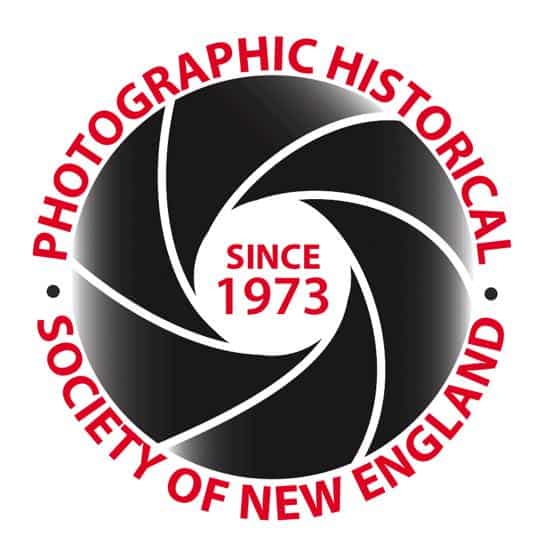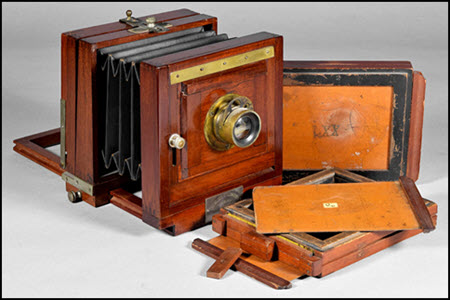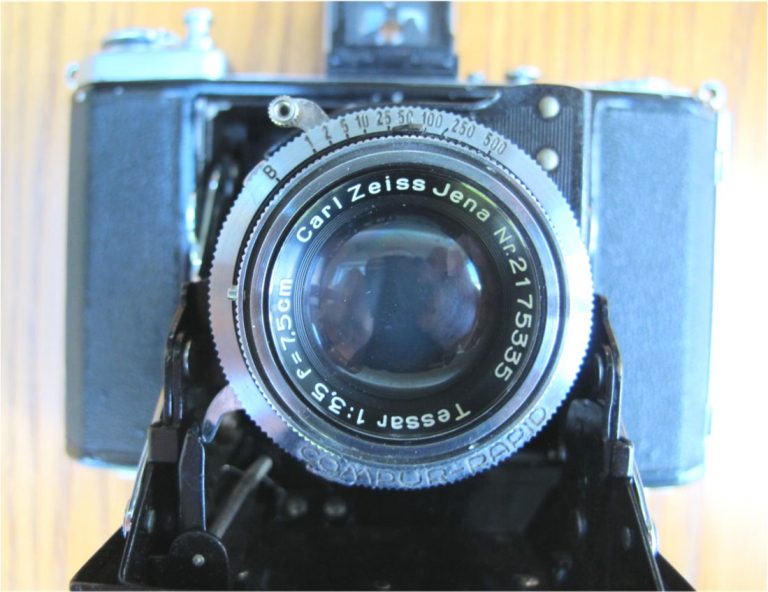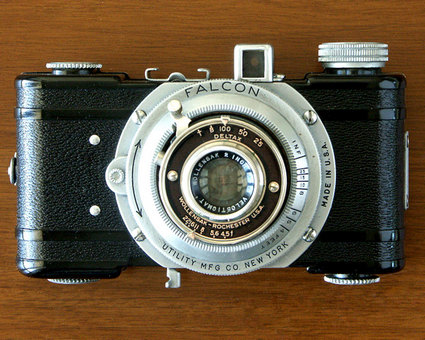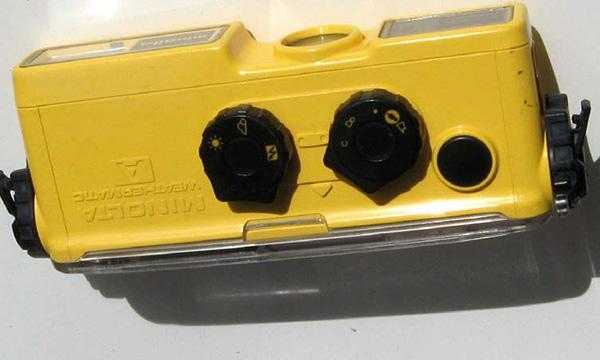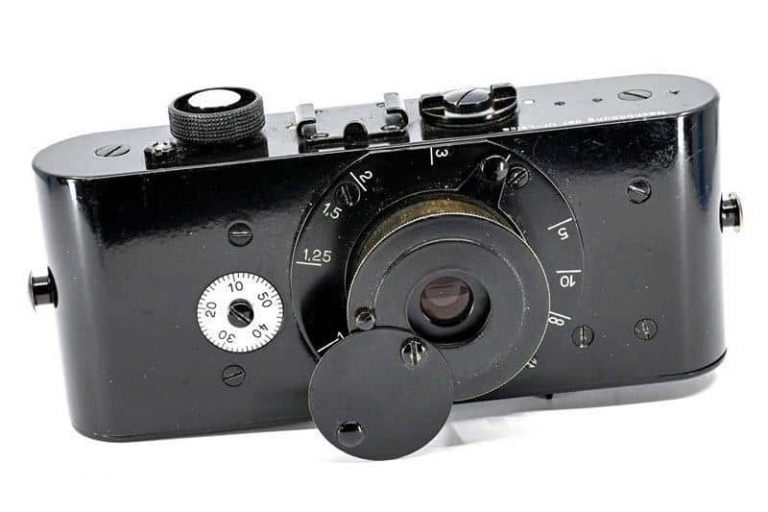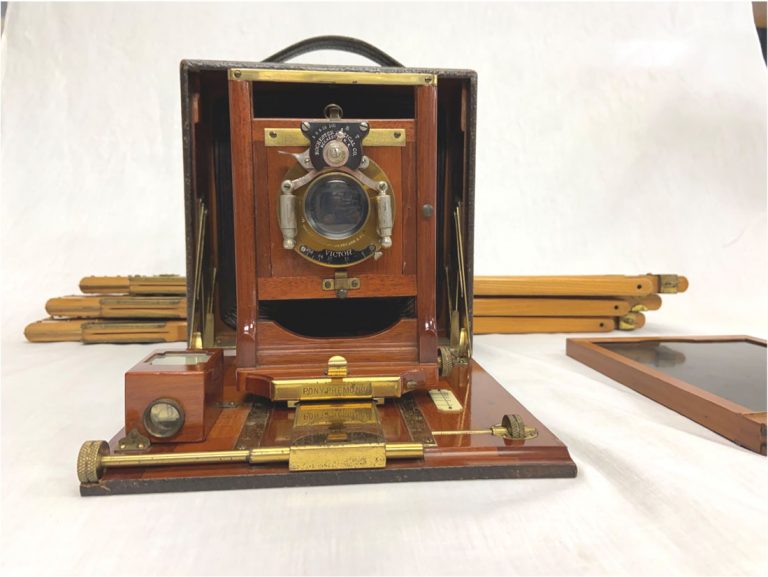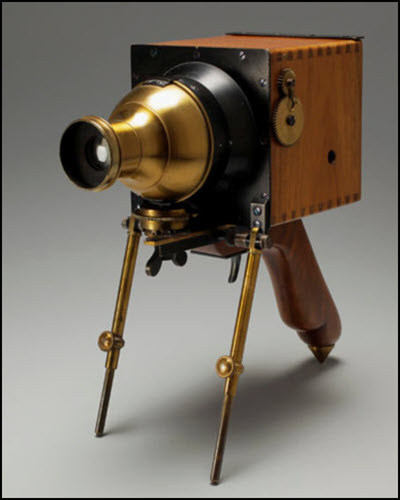
Combination cameras were manufactured in Boston by the Blair Tourograph & Dry Plate Company from 1882 to 1894 and “are traditional field designs offered with a unique [patented] accessory plate-holder extension mounted at the rear” (https://www.collectorsweekly.com/stories/226546-blaircombination-camera-1882).
In an 1882 pamphlet, the company claimed that with the extension, “the camera is made capable of carrying plates double the size of its original capacity without sacrificing any of the advantages.” In other words, the extension allows for use of 5 x 8 inch plates in a 4 x 5 inch format camera or 6 1/2 x 8 1/2 or 8 x 10 inch plates in a 5 x 8 inch format camera. Extensions were available for about a decade, but they are hard to find today.

Thomas Henry Blair founded his company shortly after George Eastman made significant improvements to the dry plate process, important to the success of the Blair line. The 4 x 5 inch model with 5 x 8 inch extender sold for $28 in 1882, over $800 in 2021 dollars. Protecting his market, Thomas Blair was careful to warn that this was for occasional use, not intended to substitute for the larger format cameras which his company continued to sell. In an attempt to expand the market for the field camera, he advertised that it was also suitable for interior and studio use. Made of polished mahogany with a cherry base, the bellows camera has brass hardware (nickel-plated), and a metal cap that served as a shutter. One of the two known surviving combination cameras is at the George Eastman Museum in Rochester. The high price and lack of cameras in the antiques market probably indicates that few were manufactured or sold.
More about Thomas Henry Blair
The history of the Blair Tourograph & Dry Plate Company is entangled with that of George Eastman and the Eastman Kodak Company. According to Wikipedia, Blair was the first competitor to challenge Kodak’s celluloid film (1889). Blair’s improved film stock arrived in 1891, which “had a frosted base to facilitate easier viewing by transmitted light” (https://en.wikipedia.org/wiki/Film_stock).
At the same time, and for about 5 years, Blair’s stock was used at Thomas Edison’s laboratory for experiments with the Kinetoscope. In 1893, patent lawsuits drove Blair to leave his American company and set up business in Britain. The new company provided the transparent film base required by the latest movie projectors. Blair’s new company supplied European filmmaking pioneers, including Birt Acres, Robert Paul, George Albert Smith, Charles Urban, and the Lumière Brothers.
Meanwhile, the American company had been unable to offer it, and was soon bought by Eastman. Blair eventually sold his English company to Pathé in 1907 and retired to the US.
What the heck…
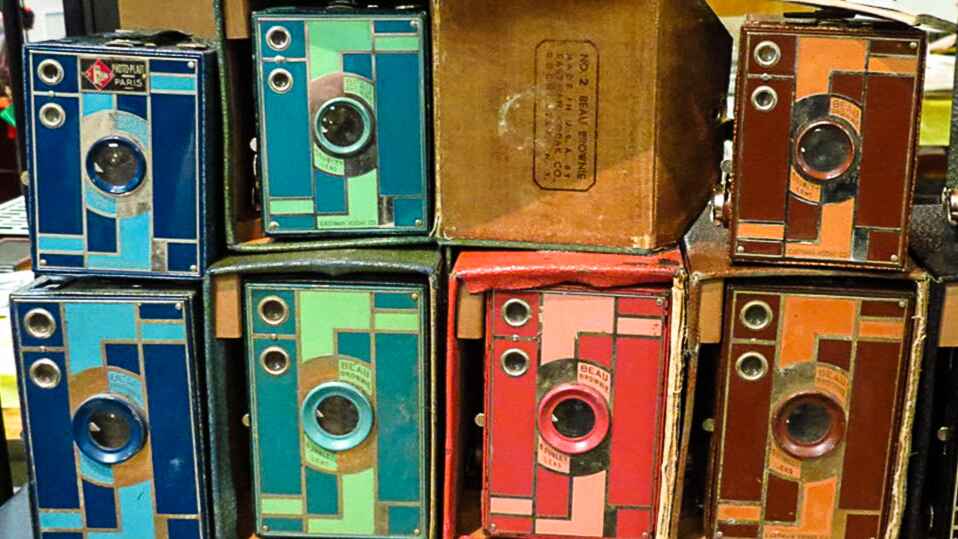
Are Those Even Cameras?!
Join the PHSNE Newsletter and learn more about photographic history and preservation. Already an expert? Come and share your collections and knowledge as we celebrate the history and advancement of photography.
